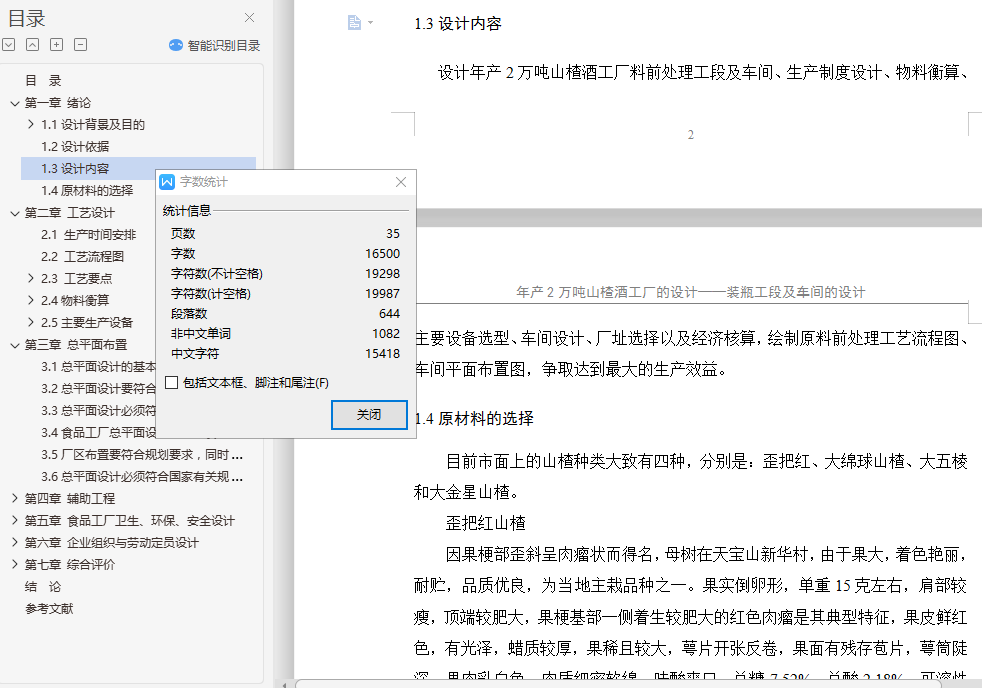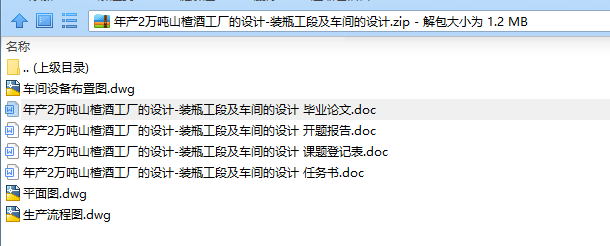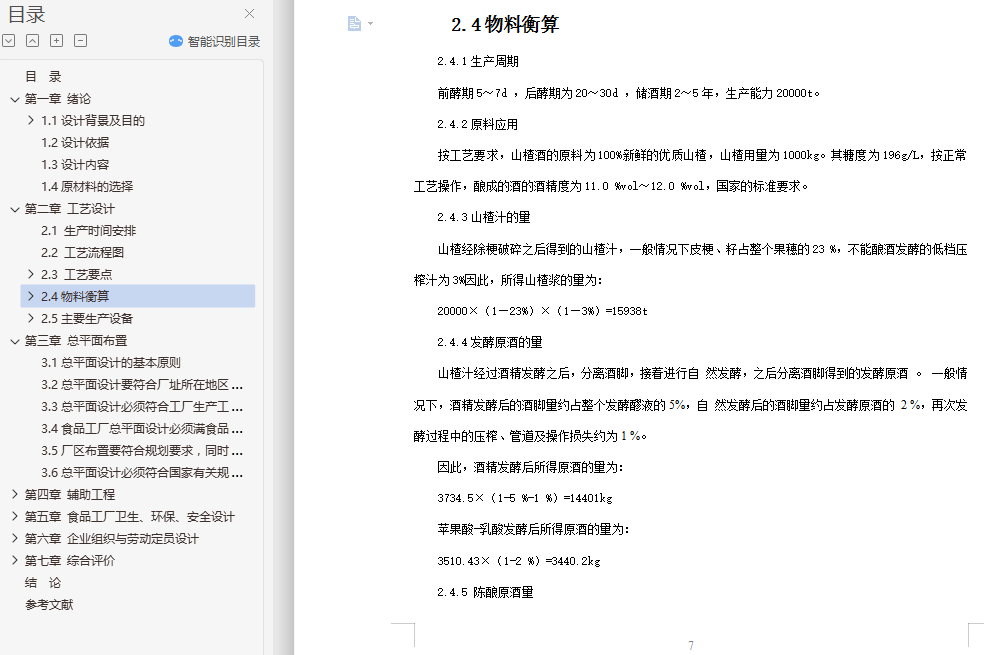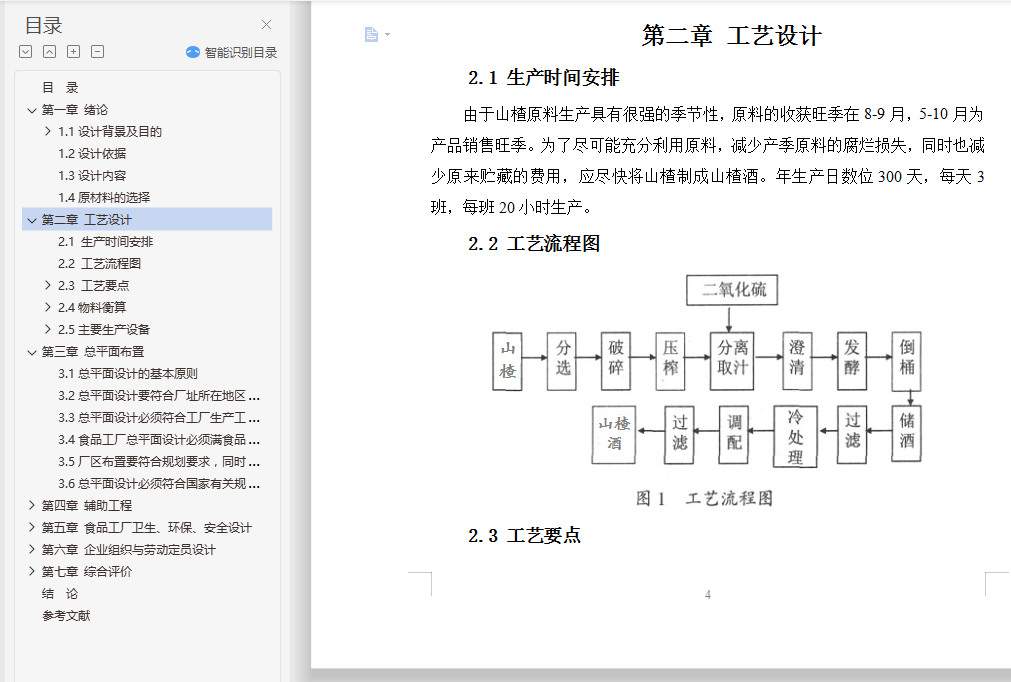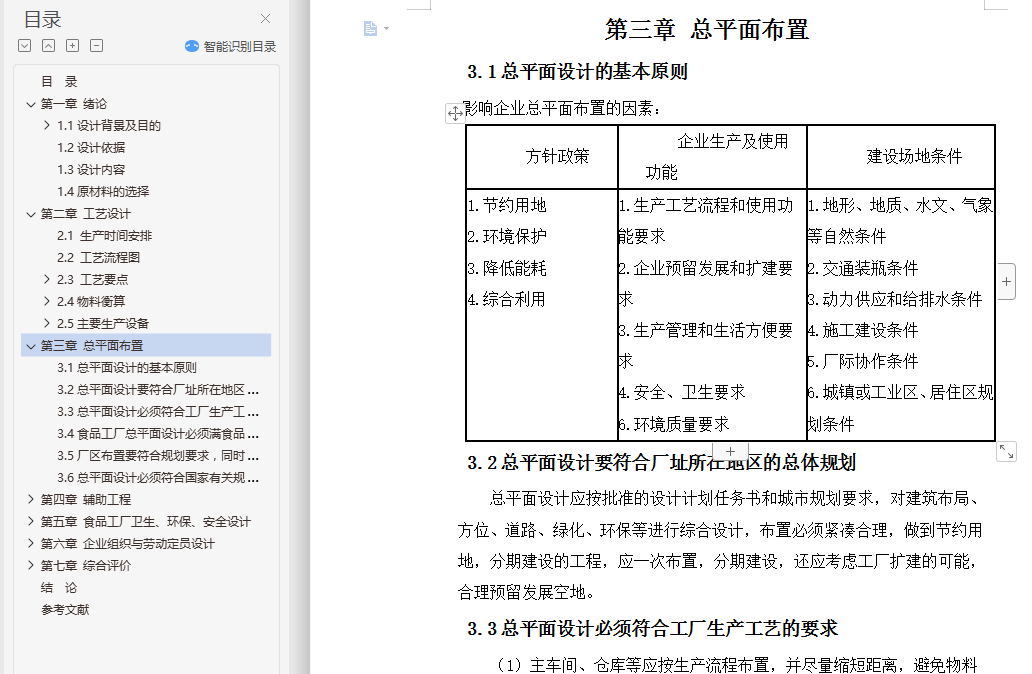摘要 目前,我国果汁酒加工业仍以生产带肉果汁为主,近10多年来,国内有些加工企业花费大量的资金引进国外浓缩果汁生产设备,生产浓缩果汁以供发酵。但由于设备投资昂贵,只有少数工厂效益较好。利用国产设备生产具有中国特色的澄清山楂酒,在国内外具有广阔的市场。随着果品产量的大幅度提高,大力发展山楂酒加工工业,对于稳定山楂生产的发展,促进农业的产业化进程,满足人民的消费需求等方面,具有重要的意义。
根据总课题要求,年产2万吨山楂酒工厂的设计——装瓶工段及车间的设计,选择最合适的装瓶线及山楂酒的装瓶,安排好车间布局及生产制度,并计算装瓶车间的经济效益,争取达到最大的生产效益。
关键词 山楂;车间设计;工艺设计;装瓶设计
Abstract At present, China's juice wine processing industry is still the main production with meat juice, nearly 10 years, some domestic processing enterprises to spend a lot of money to introduce foreign juice production equipment, the production of concentrated fruit juice for fermentation. However, due to expensive equipment investment, only a small number of factories benefit better. The use of domestic equipment to produce with Chinese characteristics to clarify Hawthorn wine, at home and abroad with a vast market. With the substantial increase in fruit production, vigorously develop the hawthorn wine processing industry, for the stability of the development of hawthorn production, promote the industrialization of agriculture process to meet the people's consumer demand, etc., has important significance.
According to the general requirements of the project, with an annual output of 20,000 tons of hawthorn wine factory design - bottling section and workshop design, select the most suitable bottling line and Hawthorn wine bottling, arrange the layout and production system, and calculate the equipment Bottle workshop of economic benefits, strive to achieve the greatest production efficiency.
Key words hawthorn; workshop design; process design; bottling design
目 录
目 录 I
第一章 绪论 1
1.1设计背景及目的 1
1.1.1山楂酒的介绍及功效 1
1.1.2目标人群 1
1.1.3发展前景 2
1.2设计依据 2
1.3设计内容 2
1.4原材料的选择 3
第二章 工艺设计 4
2.1 生产时间安排 4
2.2 工艺流程图 4
2.3 工艺要点 4
2.3.1山楂 5
2.3.3压榨 5
2.3.4分离取汁 5
2.3.5澄清 5
2.3.6清汁 5
2.3.7发酵 6
2.3.8倒桶、储酒 6
2.3.9过滤 6
2.3.10冷处理 6
2.3.11调配 6
2.3.12装瓶前的过滤 7
2.3.13装瓶、杀菌 7
2.4物料衡算 7
2.4.1生产周期 7
2.4.2原料应用 7
2.4.3山楂汁的量 7
2.4.4发酵原酒的量 7
2.4.5 陈酿原酒量 7
2.4.6 稳定后处理原酒的量 8
2.4.7 装瓶后成品的量 8
2.4.8 出酒率 8
2.4.9 二氧化硫的添加量 8
2.4.10 蔗糖添加量 8
2.5主要生产设备 8
2.5.1 除梗机 8
2.5.2 气囊压榨机 8
2.5.3 发酵罐 9
2.5.4 储罐(橡木桶) 9
2.5.5 螺杆制冷机组 9
2.5.6 发酵罐控制器 9
2.5.7 山楂汁冷却器 9
2.5.8酒瓶 9
2.5.9设备选型 9
第三章 总平面布置 12
3.1总平面设计的基本原则 12
3.2总平面设计要符合厂址所在地区的总体规划 12
3.3总平面设计必须符合工厂生产工艺的要求 12
3.4食品工厂总平面设计必须满食品工厂卫生要求 12
3.5厂区布置要符合规划要求,同时合理利用地质、地形、水文等自然条件 13
3.6总平面设计必须符合国家有关规范和规定 13
第四章 辅助工程 14
4.1原料接收站 14
4.2研发中心 14
4.2.1研发中心的任务 14
4.2.2研发中心的装备 15
4.3品控中心 15
4.3.1品控中心的任务 15
4.3.2品控中心的组成 15
4.3.3品控中心对土建的要求 15
4.4仓库 16
4.4.1意义 16
4.4.2仓库类别 17
4.4.3仓库面积的确定 17
4.4.4果蔬原料库对土建的要求 17
4.4.5成品库 18
4.4.7仓库在总平面布置中的位置 18
4.5工厂装瓶 18
4.5.1厂外装瓶 18
4.5.2厂内装瓶 18
4.5.3车间装瓶 18
4.6机修车间 19
第五章 食品工厂卫生、环保、安全设计 20
5.1工厂卫生 20
5.1.1厂址选择的卫生要求 20
5.1.2工厂内部总平面布置的卫生要求 20
5.1.3厂房内部建筑的卫生要求 20
5.1.4车间防鼠设置 21
5.1.5车间卫生室的卫生要求 21
5.1.6食品仓库的卫生要求 21
5.1.7人员个人卫生要求 22
5.1.8原辅材料的卫生要求 22
5.2环保 22
5.2.1废水处理 22
5.2.2废气处理 23
5.2.3废弃物处理 23
5.2.4环境绿化布置 23
5.3安全 23
5.3.1安全检查 23
5.3.2防火、防暴、防毒 24
第六章 企业组织与劳动定员设计 25
6.1企业组织设计 25
6.2企业劳动定员 25
第七章 综合评价 27
7.1社会效益分析 27
7.2生态效益评价 27
7.3综合评价 27
结 论 28
参考文献 29
